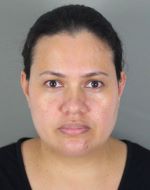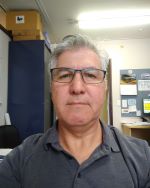Infectious diseases are traditionally diagnosed by culturing the microorganism causing disease. However, in many cases a diagnosis can be difficult to achieve due to the inability of obtaining a suitable sample and the failure to reliably grow the organism in a laboratory environment. The use of quantitative polymerase chain reaction (qPCR) is becoming more widespread in diagnostic laboratories and can offer a platform to diagnose infectious disease quickly and accurately.
When microorganisms invade the body, they release fragments of their own cell-free DNA (mcfDNA) which can be found in the blood and urine of patients. Since blood and urine are routinely obtained from patients during a hospital stay, they are ideal samples for diagnosing infectious diseases. Unfortunately, mcfDNA levels in blood and urine are low, preconcentration is required to increase mcfDNA to levels that are detectable.
Platform 1 will use special beads to capture the pathogens mcfDNA in urine, which will then be analysed by quantitative polymerase chain reaction (qPCR) to determine if the pathogen is present in the patient. This answer will be achievable within 8 hours.
Platform 2 will increase the pathogen mcfDNA from a patient sample using PCR, the PCR product is then incubated with a microbe specific CRISPR-Cas reagent which provide a fluorescence read-out if the pathogen mcfDNA is present in the patient sample.
Infectious diseases are traditionally diagnosed by culturing the microorganism causing disease. However, in many cases a diagnosis can be difficult to achieve due to the inability of obtaining a suitable sample and the failure to reliably grow the organism in a laboratory environment. The use of quantitative polymerase chain reaction (qPCR) is becoming more widespread in diagnostic laboratories and can offer a platform to diagnose infectious disease quickly and accurately.
When microorganisms invade the body, they release fragments of their own cell-free DNA (mcfDNA) which can be found in the blood and urine of patients. Since blood and urine are routinely obtained from patients during a hospital stay, they are ideal samples for diagnosing infectious diseases. Unfortunately, mcfDNA levels in blood and urine are low, preconcentration is required to increase mcfDNA to levels that are detectable.
Platform 1 will use special beads to capture the pathogens mcfDNA in urine, which will then be analysed by quantitative polymerase chain reaction (qPCR) to determine if the pathogen is present in the patient. This answer will be achievable within 8 hours.
Platform 2 will increase the pathogen mcfDNA from a patient sample using PCR, the PCR product is then incubated with a microbe specific CRISPR-Cas reagent which provide a fluorescence read-out if the pathogen mcfDNA is present in the patient sample.
Both platforms offer opportunities for fast non-invasive diagnosis that could be used in remote locations and modified in the future to diagnose emerging pathogens or provide point-of-care diagnostics.
This project aligns with Te Niwha’s mission by supporting world class research to develop diagnostic platforms that can be used to enhance the diagnosis of otherwise hard to diagnose infectious diseases. These platforms can be used for the diagnosis of numerous infectious diseases including those that disproportionally affect Māori and Pasifika communities.











